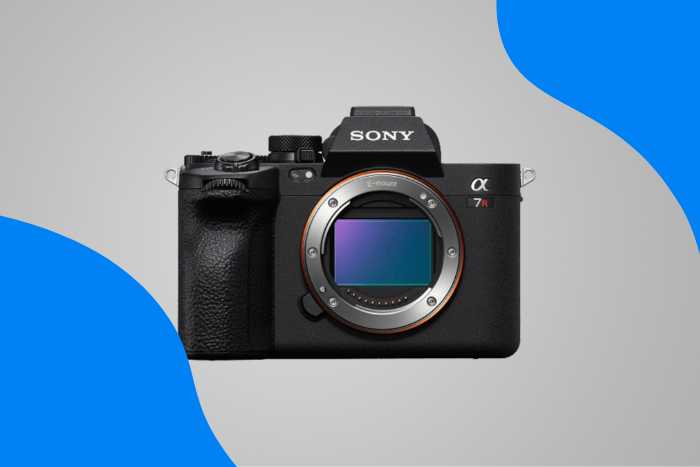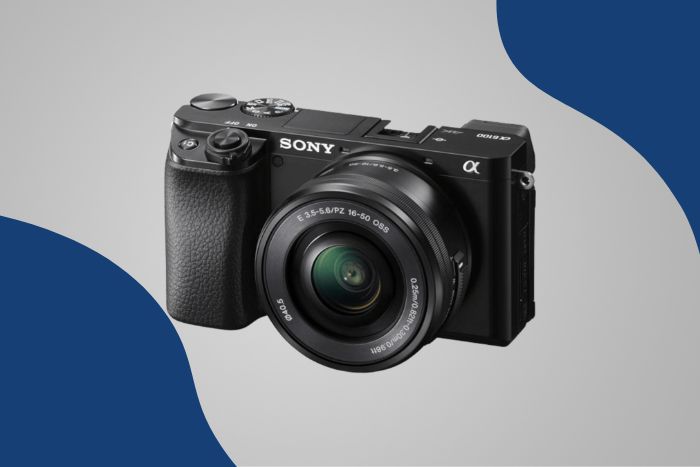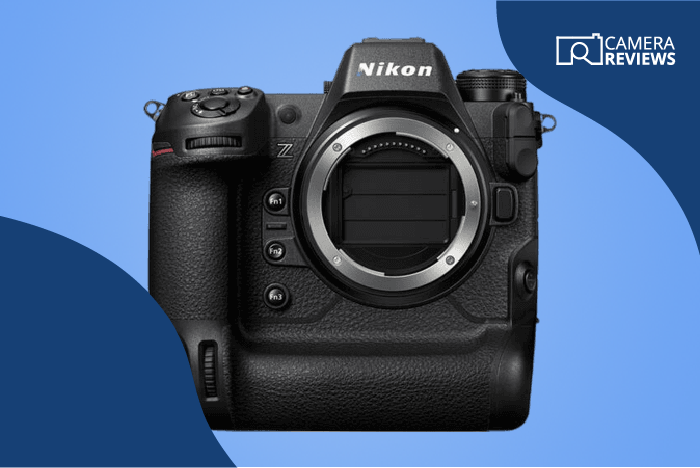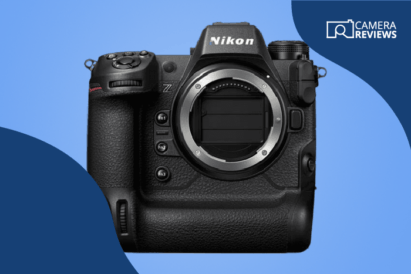When I traded in my Nikon DSLRs a few months ago, I asked myself, “What’s the best camera for wildlife photography?” As a wildlife photographer, I look for a camera that can take the highest number of pin-sharp shots in a second or so of continuous shooting.
This is your “keeper rate.” It’s simply the frame rate times the percentage of sharp shots (up to the buffer size). You might be shooting a photo of a cheetah chasing a gazelle, a bear catching a salmon, or a humpback whale breaching.
Whatever it is, the “decisive moment” is what you want to capture. And you can maximize your “keeper rate” by buying a camera with the best frame rate, buffer size, and autofocus system you can afford.
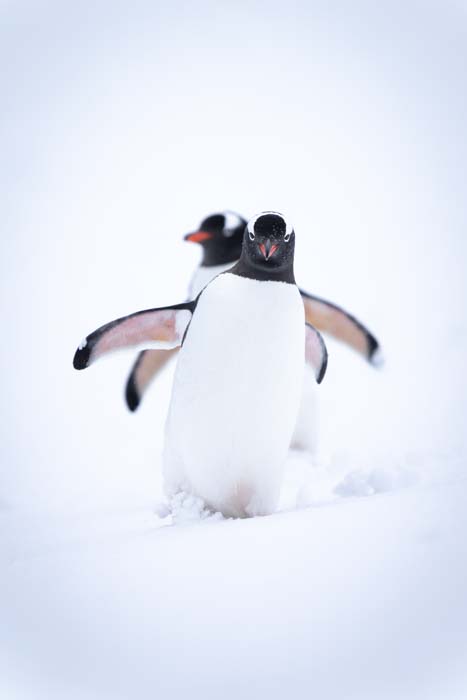
Buying Suggestions for Wildlife Cameras
I bought a pair of Sony a1s. And I haven’t regretted it. The a1 isn’t perfect. But it offers a unique combination of sensor size, frame rate, buffer size, eye detection, and subject tracking. (Go to the end of the article if you’re interested in my lens kit.)
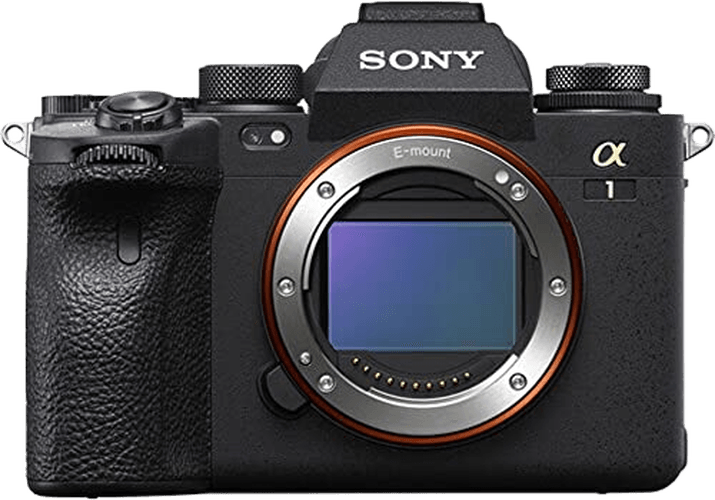
Sony a1
Having said all that, it’s still a very expensive piece of kit. If you’re just starting as a photographer, there’s nothing wrong with choosing a bridge camera like the RX10 IV.
Alternatively, a Sony a6400 or a6600 suits someone looking for a rangefinder model and smaller, lighter lenses. Even the full frame cameras in the a7 and a9 ranges are much cheaper and offer the same features and performance.
Sony also keeps older models on sale even after their replacements are available. That gives you an easy way to save money if you don’t mind missing out on the latest features.
What is the Best Sony Camera for Wildlife Photography?
Are you gearing up to take a safari photography trip? Or perhaps it’s local wildlife or birds you want to take better photos of. Either way, let’s dive in! Here’s our condensed list of the best Sony wildlife photography cameras on the market.

- Large sensor captures tons of detail
- High frame rate of 30 fps
- Eye tracking (human, animal, and bird)
- Easy customization
- Silent shooting for quiet situations
- Incredible 8K/30p Ultra HD video

- Impressive 20 fps continuous shooting
- Lightning-fast autofocus
- Improved ergonomics
- Great file transferring speeds
- 5-axis in-body image stabilization to counter camera shake
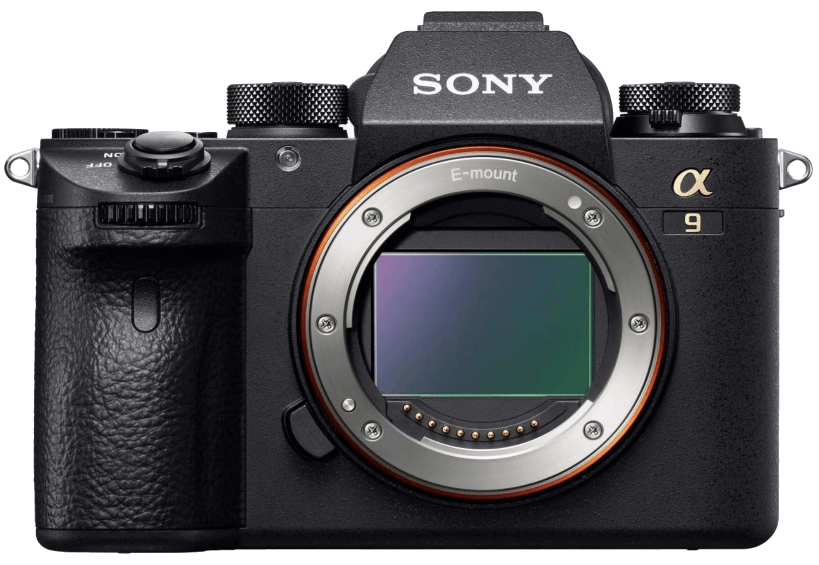
- Impressive 20 fps continuous shooting
- Lightning-fast autofocus
- Great file transferring speeds
- 5-axis in-body image stabilization to counter camera shake
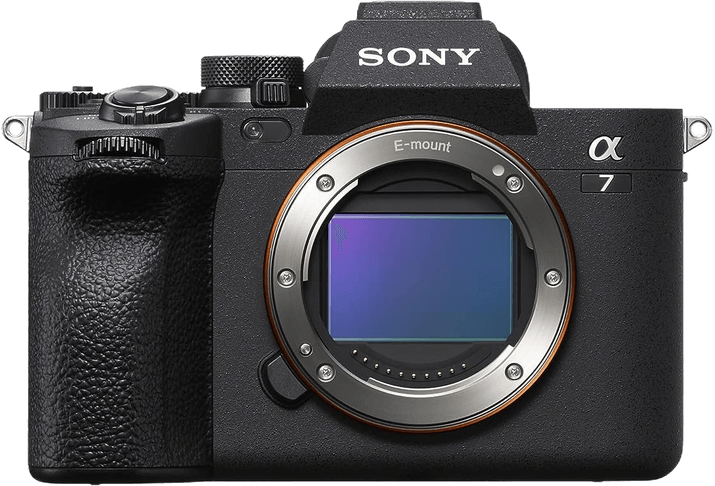
- Excellent image quality
- Super responsive autofocus
- 5.5 stops of image stabilization
- Fully articulating rear screen
- Powerful video capabilities (4K / 60p, 10-bit video) and live streaming
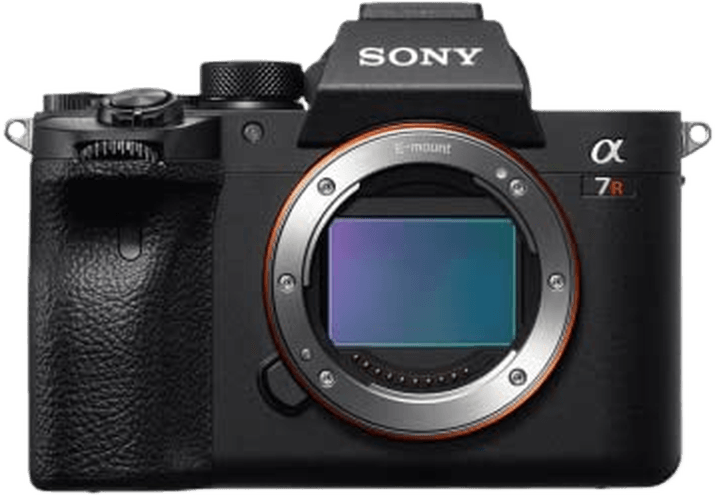
- Super high-resolution sensor
- Stunningly sharp image quality
- Excellent face and eye detection AF
- Large, high-resolution EVF
- Sharp 4K Ultra HD video
- Weather sealing to protect from elements

- Quick and accurate 693-point AF
- Wide ISO range with a low 50 setting
- Outstanding dynamic range and low-light performance
- Records stunning 4K video and has live stream capabilities

- Astonishing autofocus
- 5-axis in-body image stabilization reduces camera shake
- Silent shooting
- Terrific battery life
- Small, lightweight camera
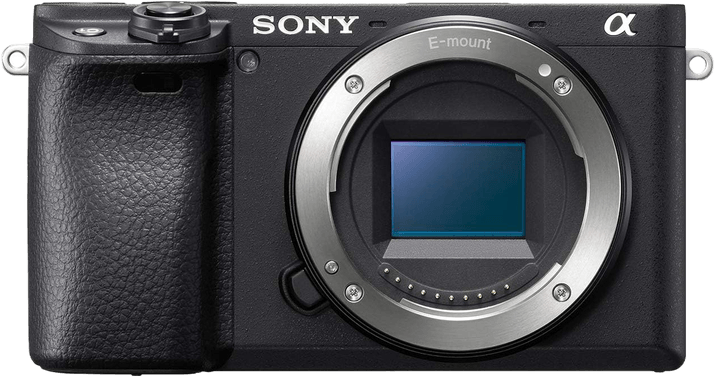
- Superb image quality for APS-C
- Good low-light performance
- Compact camera body
- No time limit for recording video

- Excellent image resolution
- Wide ISO range with 50 ISO setting
- Sophisticated and reliable AF system
- Dual card slot for more capacity
- Great silent shooting mode for sensitive situations
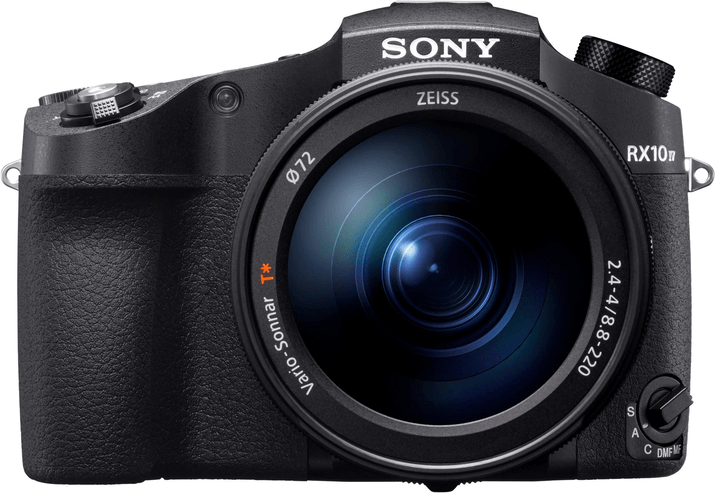
- Impressive 24 fps maximum continuous shooting speed
- Crisp image quality
- Unrivaled lens for a bridge camera
- Incredible 24-600mm zoom range
- 4K video quality
10 Best Sony Cameras for Wildlife Photography (in Detail!)
So what does that mean in detail? Here’s our in-depth guide to each Sony wildlife camera’s features and benefits. Let’s find out what the best wildlife camera is for you!
1. Sony a1
Best Sony Camera for Wildlife Photography
no

| Camera Type |
Camera Type
|
| Megapixels |
Megapixels
50.1 MP |
| Sensor Format |
Sensor Format
|
| Sensor Size |
Sensor Size
24 x 35.9 mm
|
| Frame Rate |
Frame Rate
30 fps |
| Autofocus Points |
Autofocus Points
759 |
- Large sensor captures tons of detail
- High frame rate of 30 fps
- Eye tracking (human, animal, and bird)
- Easy customization
- Silent shooting for quiet situations
- Incredible 8K/30p Ultra HD video
- Expensive
- Highest frame rates only for JPEG, HEIF, and lossy compressed RAW files
- Eye tracking only selected manually
- Small rear LCD screen
- No GPS
The Sony a1 is their flagship mirrorless camera. It’s probably the best camera for wildlife photography on the market. (Although the Nikon Z9, Canon R3, and R5 are close behind.)
Sony engineers built the a1 as if the word “trade-off” didn’t exist. It offers the best of almost everything. That includes a 30 fps burst rate with zero rolling shutter, a buffer of 238 compressed RAW files, eye detection, and eye tracking. And all that comes with a fantastic 50 MP sensor!
This combination of specs gives you a “keeper rate” that approaches 100% (94% at 30 fps and 98% at 20 fps). I’ve had my pair of Sony a1s for a year now. They’ve never let me down… except when I’ve knocked a switch by accident or forgotten to change my settings!
Photo and Video
The pictures look good straight out of the camera. They need very little post-processing. But you also have the choice of various Creative Look settings. For instance, there are two vivid modes (VV and VV2). And you can dial the saturation up or down using a range of ±9 rather than ±3 on earlier Sony models.
Alternatively, you can shoot JPEGs at different resolutions. This includes a new format called “Light.” It has the same image quality as “Standard.” But it’s only half the file size.
The Sony a1 offers 5.5 stops of in-body image stabilization (IBIS). And that works with any stabilization in the telephoto lenses to help you get the sharpest shots.
The Sony a1’s video specs are just as impressive. It offers 8K up to 30p and 4K up to 120p for slow motion replay.
Usability
Apart from the speed and accuracy of the camera, one of the great joys is its sheer usability. The 9.44 million dot OLED electrons viewfinder (EVF) is large, bright, and sharp. It has a magnification of 0.9x and a maximum refresh rate of 240 Hz.
The buttons and dials are very responsive. And there are endless customization options to speed up and improve your workflow. There’s also an anti-flicker mode for shooting indoors under fluorescent or tungsten light to reduce their impact on your images.
The flash sync speed with the mechanical shutter is the fastest on the market at 1/400 s (1/500 s in APS-C format). It applies to all kinds of action photography. But perhaps not as much for wildlife photography because flash isn’t permitted in many national parks.
Yes, the a1 is an expensive toy. And you need to buy the dearer CFexpress Type A cards to make the most of the frame rate and buffer size.
There are also a few missing features such as illuminated buttons, GPS, and MOV and M4V video formats. But it’s definitely worth the investment if you have the budget.
If you are considering investing in the Sony a1 for wildlife photography, see how it compares with other powerhouse cameras from different brands:
- Canon EOS R5 vs Sony a1 Comparison
- Canon EOS R3 vs Sony a1 Comparison
- Fujifilm GFX 50S II vs Sony a1 Comparison
- Nikon Z9 vs Sony a1 Comparison
2. Sony a9 II

| Camera Type |
Camera Type
|
| Megapixels |
Megapixels
24.2 MP |
| Sensor Format |
Sensor Format
|
| Sensor Size |
Sensor Size
23.8 x 35.6 mm
|
| Frame Rate |
Frame Rate
20 fps |
| Autofocus Points |
Autofocus Points
693 |
- Impressive 20 fps continuous shooting
- Lightning-fast autofocus
- Improved ergonomics
- Great file transferring speeds
- 5-axis in-body image stabilization to counter camera shake
- No in-camera RAW image processing
- Confusing menus
- Battery performance isn't great
- No S-Log video
- Subpar video quality compared to new full-frame cameras
Sony launched the a9 II in 2019 as the upgraded version of the a9. It has an improved BIONZ X image processing engine and front-end large-scale integrated (LSI) processor. But there’s very little difference between the two in terms of features and performance.
The a9 II has a couple of extra default crops, the ability to save camera setting files to memory cards, and a rather awkward voice recorder.
It also has the following:
- A 1000BASE-T LAN port for high-speed data transfer
- A faster mechanical shutter frame rate for action shots
- Real-time Eye autofocus (AF), including animals
- Tracking for video
Apart from that, there are a few slight improvements to the menu system—battery life, color depth, dynamic range, ergonomics, and IBIS system. But it weighs slightly more. And the high ISO performance is worse!
Everything else is much the same, including the sensor size, frame rate, and buffer. You can look at our side-by-side comparison of the a9 and a9 II.
3. Sony a9

| Camera Type |
Camera Type
|
| Megapixels |
Megapixels
24.2 MP |
| Sensor Format |
Sensor Format
|
| Sensor Size |
Sensor Size
23.8 x 35.6 mm
|
| Frame Rate |
Frame Rate
20 fps |
| Autofocus Points |
Autofocus Points
693 |
- Impressive 20 fps continuous shooting
- Lightning-fast autofocus
- Great file transferring speeds
- 5-axis in-body image stabilization to counter camera shake
- No in-camera RAW image processing
- Confusing menus
- Battery performance isn't great
- No S-Log video
- Subpar video quality compared to new full-frame cameras
The Sony a9 mirrorless camera marks an improvement over the a7 series. It only has a 24 MP sensor. But Sony has traded off sensor size for speed. That makes it ideal for sports and wildlife photography.
You get 20 fps, blackout-free, silent shooting with the electronic shutter. And the rolling shutter effect is limited. The buffer can handle 241 compressed RAW files (128 uncompressed RAW).
The image quality is excellent. And the dual gain approach (or twin base ISOs of 100 and 640) helps with low-light performance.
The EVF is big and sharp with automatic brightness and a 120 Hz refresh rate. And the dials and controls have all been improved.
Customizations, Grip, and Weather Sealing
The customization options are almost endless. You can press and hold almost any button to access different features. That includes AF area, autofocus mode, and shooting settings such as shutter speed or exposure mode.
But like all Sony mirrorless cameras, it doesn’t come with an integrated grip. That affects balance when using a telephoto lens.
You might want to buy the optional battery grip. It makes the camera heavier. But you can more easily switch between portrait and landscape.
And you don’t need the extra battery life. The official CIPA rating is 480 shots per charge. But if you shoot in burst mode, you’ll easily get 10 times as many!
Just a word of warning. It’s supposed to be dust- and moisture-resistant. But the lack of rubber gaskets on the ports and doors for the memory cards and batteries suggests it’s not fully weather sealed.
4. Sony a7 IV

| Camera Type |
Camera Type
|
| Megapixels |
Megapixels
33 MP |
| Sensor Format |
Sensor Format
|
| Sensor Size |
Sensor Size
23.8 x 35.6 mm
|
| Frame Rate |
Frame Rate
10 fps |
| Autofocus Points |
Autofocus Points
759 |
- Excellent image quality
- Super responsive autofocus
- 5.5 stops of image stabilization
- Fully articulating rear screen
- Powerful video capabilities (4K / 60p, 10-bit video) and live streaming
- More expensive than the Sony a7 III
- 6 fps with 14-bit lossless compressed or uncompressed RAW files
- Significant distortion with moving subjects using a silent shutter
- Occasional issues with rolling shutter
- Requires a fast memory card
The Sony a7 IV is a professional-style mirrorless camera. It offers a 33 MP full frame BSI-CMOS sensor, 10 fps continuous shooting speed, and a buffer size of up to 800 RAW files (at 6 fps) with a CFexpress Type card.
It’s 25% more expensive than the a7 III. But it offers several updates. Apart from the improved sensor resolution, the main difference is in the autofocus system. The AF system is nearly perfect for wildlife photography. So your “keeper rate” should soar to around 95%!
You also get the following:
- An extra memory mode to keep an extra set of camera settings
- Lossless compressed RAW for reduced file sizes without losing quality
- Bird-eye recognition for sharp focus
- More flexible picture controls
- A Soft Skin effect if you’re documenting yourself as a wildlife photographer and want to look your best
Like the a1, it also features the new JPEG format called “Light.” It’s half the size of a standard JPEG. So you can take more pictures.
There are two more default crop modes for more options. And the LCD is also slightly better. It flips around for self-portraits or vlogging when you’re out in the field.
Video Improvements and Drawbacks
The other big improvements are in the camera’s video capability for capturing wildlife:
- 10-bit capture helps to process Log footage. It allows full Hybrid Log-Gamma (HLG) recording for a high dynamic range and high-quality playback on HDR TVs.
- 4K 60p helps slow-motion wildlife clips (with a crop to APS-C / Super 35 dimensions).
- You can use H.265 compression. It’s high-efficiency video coding. So it reduces the file size and the bit rate required.
- The S-Cinetone color profile is now available for a rich, cinematic look.
- Breathing compensation stops the camera from changing the framing as it focuses.
- Eye AF and tracking are available when shooting video… perfect for filming animals in the wild.
The menu system lets you select which settings you carry over from stills into video. That includes aperture, shutter speed, ISO, exposure compensation, metering mode, and others.
On the other hand, the EVF’s automatic adjustment doesn’t work in daylight. You need to boost it manually. And you also get skewed lines when panning due to rolling shutter effect.
5. Sony a7R IV

| Camera Type |
Camera Type
|
| Megapixels |
Megapixels
61.2 MP |
| Sensor Format |
Sensor Format
|
| Sensor Size |
Sensor Size
23.8 x 35.7 mm
|
| Frame Rate |
Frame Rate
10 fps |
| Autofocus Points |
Autofocus Points
425 |
- Super high-resolution sensor
- Stunningly sharp image quality
- Excellent face and eye detection AF
- Large, high-resolution EVF
- Sharp 4K Ultra HD video
- Weather sealing to protect from elements
- Long write times
- Poor AF at high frame rates
- No pixel-shift motion compensation
- Complicated menus
- Limited, laggy touchscreen functionality
The Sony a7R IV mirrorless camera offers excellent image quality thanks to its 61 MP sensor… especially at high ISOs. It even matches the sharpness of a medium format camera like the 100 MP Fujifilm GFX100.
If you use the APS-C crop mode, that still gives you 25 MP images. They’ll be free of Bayer color interpolation and thus sharper than those taken with a 25 MP camera at its native resolution.
You also get a frame rate of 10 fps. And the buffer of 68 frames (either JPEG or RAW) is enough for a continuous burst of nearly seven seconds.
But the downside of having so many smaller pixels is poorer noise reduction. That’s not ideal for a wildlife photography camera.
Other Specs Compared to the Sony a9 Series
You’ll enjoy real-time tracking and eye detection if you have the latest firmware. That means you should get a “keeper rate” of nearly 90%! It’s not quite at the level of the a9 or a9 II.
But the a7R IV has a better EVF and dynamic range. Plus, it’s cheaper!
The a7R IV also has camera settings you can save to a memory card. This can be helpful if you’re shooting different wildlife subjects or in different lighting situations.
And it has 4K video picture profiles, including S-log and HLG. Again, for a high dynamic range when recording wildlife.
You also get 5-axis in-body image stabilization. But it isn’t as good as what you get from Canon, Olympus, or Panasonic mirrorless cameras. That means you have to rely on the optical stabilization of your telephoto lenses.
6. Sony a7 III

| Camera Type |
Camera Type
|
| Megapixels |
Megapixels
24.2 MP |
| Sensor Format |
Sensor Format
|
| Sensor Size |
Sensor Size
23.8 x 35.6 mm
|
| Frame Rate |
Frame Rate
10 fps |
| Autofocus Points |
Autofocus Points
693 |
- Quick and accurate 693-point AF
- Wide ISO range with a low 50 setting
- Outstanding dynamic range and low-light performance
- Records stunning 4K video and has live stream capabilities
- Noise reduction can remove details
- Front heavy with big lenses
- Menu system is difficult to get used to
The full frame Sony a7 III offers a similar 24 MP sensor to the APS-C models. But it has a slightly lower frame rate of 10 fps (8 fps with live view).
But the autofocus system is more reliable. And your “keeper rate” is likely at least 10% higher than the a7R III (80% when shooting at 10 fps, 85% at 8 fps).
Autofocus and Buffer
The autofocus performance is top-notch even though the a7 III doesn’t have the same processing power as the a9. This is because they both have the same AF system with the same number of focus points. That makes the a7 III excellent value compared to the much higher-priced a9.
You also get a buffer of 89 frames shooting in compressed RAW (79 RAW + JPG or 40 frames uncompressed RAW). That’s the equivalent of nearly nine seconds of continuous shooting. That should be more than enough to capture detailed wildlife photography action.
Other Features
You also get a few useful features common to most of Sony’s mirrorless cameras. These include silent shooting, dual SD card slots, and decent battery life.
But the resolution and refresh rate of the EVF are average. This means less smooth and sharp views of your subject.
Plus, it doesn’t have an integrated grip if you prefer a heavier camera. It’s almost “too light” to pair well with a long telephoto lens you use for wildlife photography.
7. Sony a6600

| Camera Type |
Camera Type
|
| Megapixels |
Megapixels
24.2 MP |
| Sensor Format |
Sensor Format
|
| Sensor Size |
Sensor Size
15.6 x 23.5 mm
|
| Frame Rate |
Frame Rate
11 fps |
| Autofocus Points |
Autofocus Points
425 |
- Astonishing autofocus
- 5-axis in-body image stabilization reduces camera shake
- Silent shooting
- Terrific battery life
- Small, lightweight camera
- Slow buffer speeds
- Controls feel cramped with large hands
- Limited touchscreen controls
- No pop-up flash
- Rolling shutter recording video
The Sony a6600 and a6400 are rangefinder-style crop sensor mirrorless cameras. They only have a burst rate of 11 fps (8 fps with electronic shutter), a buffer size of 46 RAW files, and a 24.2 MP APS-C sensor.
But the lack of megapixels is an advantage if you do a lot of cropping. If you crop a full frame 24 MP image, the shallower depth of field does a better job of separating your subject from the background.
However, your shots would be less sharp because you’d have fewer megapixels. Strange but true.
Both a6000 series models can shoot unlimited 4K Ultra HD video up to 30p (3840 x 2160 with a 1.2x crop). Or you can shoot Full HD up to 120 fps.
They both offer the following:
- A silent shooting mode (a nice feature for wildlife photographers)
- A 180-degree tilting touch screen for difficult angle shots
- Wi-Fi, NFC, and Bluetooth connectivity for easy files uploads and sharing
- Weather sealing for outdoor sports and wildlife photography
- Time-lapse shooting
Focusing, Stabilization, and Battery Life
The autofocus systems have 425 phase detect and 425 contrast detect focus points covering 84% of the frame. That means a focus acquisition time of only 0.2 seconds.
AI and machine learning control animal and human eye detection and real-time tracking AF (down to -2 EV). This is the equivalent of what you’d get with a much more expensive, full frame camera like the a9!
There aren’t many differences between the a6600 and a6400. But the “flagship” a6600 has 5-axis in-body image stabilization to reduce camera shake. And it has eye detection when shooting video and a headphone port.
You also get a much longer life due to the newer NP-FZ100 battery. And more time in the field can, of course, help you get that perfect shot in wildlife photography.
8. Sony a6400

| Camera Type |
Camera Type
|
| Megapixels |
Megapixels
24.2 MP |
| Sensor Format |
Sensor Format
|
| Sensor Size |
Sensor Size
15.6 x 23.5 mm
|
| Frame Rate |
Frame Rate
11 fps |
| Autofocus Points |
Autofocus Points
425 |
- Superb image quality for APS-C
- Good low-light performance
- Compact camera body
- No time limit for recording video
- No in-camera RAW image editing
- No in-body image stabilization
- Screen tilts but no further articulation
- Complicated menu system
As explained above, the Sony a6400 is similar to the a6600. But it is a few hundred dollars less expensive. You can compare the a6400 and a6600 and decide if it’s worth the extra cost.
As mentioned, the a6600 has IBIS, a larger buffer size, better low-light performance, and double the number of shots per battery charge.
However, both models suffer from a small viewfinder, a lack of GPS, and poor ergonomics.
The “mid-range” a6400 is lighter and has a built-in flash. And it has better color depth and dynamic range for wildlife photography.
9. Sony a7R III

| Camera Type |
Camera Type
|
| Megapixels |
Megapixels
42.4 MP |
| Sensor Format |
Sensor Format
|
| Sensor Size |
Sensor Size
24 x 35.9 mm
|
| Frame Rate |
Frame Rate
10 fps |
| Autofocus Points |
Autofocus Points
425 |
- Excellent image resolution
- Wide ISO range with 50 ISO setting
- Sophisticated and reliable AF system
- Dual card slot for more capacity
- Great silent shooting mode for sensitive situations
- No video until image buffer is clear
- Long and complicated menu system
- Slow 10 fps maximum burst
- 4K video is not as smooth compared to newer camera models
The Sony a7R III is the last of the interchangeable lens cameras for wildlife photography on our list. It boasts a full frame 42 MP BSI sensor. If you plan on doing a lot of bird photography, you can crop it to APS-C format to get the extra reach and still get 18 MP images.
The design is similar to that of the a7 III and a9. It has dual memory card slots, good battery life, and weather sealing. These are all important features to have when you spend long periods outdoors shooting wildlife photography.
The EVF has a higher resolution and a faster refresh rate than the one on the a7 III. So you have a smoother-looking and clearer view of your subject for framing and focusing.
On the other hand, the highest frame rate of 10 fps (or 8 fps with live view) is slightly disappointing. And the autofocus system is problematic. It’s not ideal for wildlife action shots.
The “keeper rate” is only around 70%. And phase detection AF doesn’t work at apertures smaller than f/8. That means the camera locks focus after the first frame of a burst… unless you drop down to the low setting of 3 fps.
10. Sony Cyber-shot RX10 IV

| Camera Type |
Camera Type
|
| Megapixels |
Megapixels
20 MP |
| Sensor Format |
Sensor Format
|
| Sensor Size |
Sensor Size
13.2 x 8.8 mm
|
| Frame Rate |
Frame Rate
24 fps |
| Autofocus Points |
Autofocus Points
315 |
- Impressive 24 fps maximum continuous shooting speed
- Crisp image quality
- Unrivaled lens for a bridge camera
- Incredible 24-600mm zoom range
- 4K video quality
- Expensive price tag
- Not an interchangeable lens camera
- No attached ND filter
- Slow autofocus in video mode
- Heavy for a compact camera
The Sony Cyber-shot RX10 IV is a lightweight but expensive bridge camera (or super zoom). It’s similar to the one I first bought as a professional wildlife photographer.
A bridge camera is usually “a jack of all trades and master of none.” But the RX10 IV offers an autofocus system and image quality of a DSLR. So it fills a niche if you’re just starting in wildlife photography.
It has the same lens, resolution, ISO range, flash, electronic viewfinder, and image quality as the RX10 III. But the autofocus is three times faster. And the buffer is five times bigger. There are also other upgrades, including Bluetooth.
It only has an 8.8 x 13.2 mm 20 MP sensor (2.7x crop factor) with no RAW support. But there is one benefit of the smaller sensor. You can shoot up to 249 JPEGs at 24 fps with autofocus tracking. That’s more than 10 seconds of silent, continuous shooting!
Autofocus, Aperture, and Stabilization
The a9’s BIONZ X processing engine and 315 phase detection focus points make the autofocus system rapid and accurate. That’s great for tracking faces, which is useful for sports and wildlife photographers.
The maximum aperture of f/2.8 to f/4 will help you create blurred backgrounds and shoot in low light. And another useful feature is the 1/2000 s flash sync speed. It’s about 10x faster than on most DSLR cameras!
You also get 4.5 stops of image stabilization. But a tripod or monopod is still advisable for wildlife photography.
Focal Lengths, Video, and Other Features
You can’t change lenses on the RX10 IV. But it gives you the equivalent of a 24-600 mm or 25x zoom on a full frame camera. That should cover just about all your bases for wildlife photography!
And if you’re a fan of macro photography, the RX10 IV can focus as close as 2.4 ft (73.2 cm) when zoomed in or 1.2″ (3.0 cm) when zoomed out.
You can also shoot 4K Ultra HD video without pixel binning to get the highest possible quality. You also get the following:
- S-log2 and S-log3 support for high dynamic range
- Gamma display assist, which helps achieve proper brightness low light
- Zebra stripes to help with exposure levels
- A proxy recording option. This creates another video in a small file size that is easy to share
Built-in mic and headphone jacks make life easier, too. The only features missing are dual card slots, full touch screen functionality, GPS, and being able to zoom in or out when shooting a burst.
Our Verdict
Wildlife photographers want a large sensor, high frame rate, big buffer, and an incredible autofocus system. Until recently, the best Sony camera for wildlife photography wasn’t available in one package.
But all that’s changed with mirrorless models like the Sony a1. It offers everything you need for photographing wildlife… at a high price!

Sony a1
I’m lucky enough to have been able to afford it. If you’re not, plenty of less expensive options are on the market. The best Sony camera for wildlife photography might be the cheapest, the lightest, or the most convenient.
It all depends on your particular circumstances. The best Sony camera for wildlife photography could even be an old second-hand model.
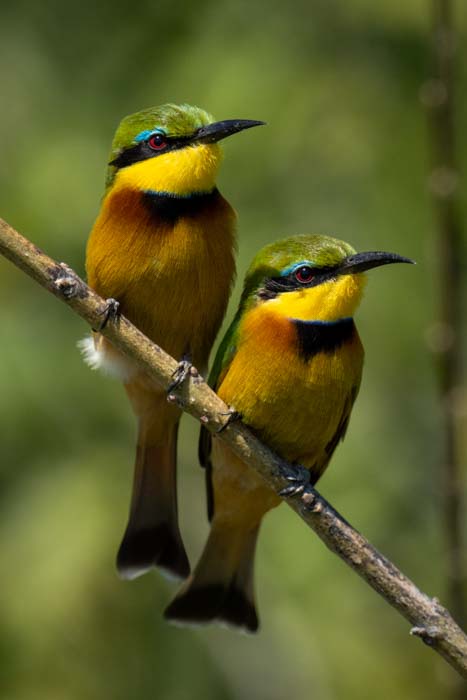
My Wildlife Camera Sony Lens Kit
If you’re curious about what lenses I use with my Sony a1, here’s the lowdown… Sony was the first to market with professional-level mirrorless cameras. So there’s a great range of glass available.
I have the following lenses:
- 12-24 mm
- 24-70 mm
- 70-200 mm
- 400 mm
- 600 mm
Plus, I have the 1.4x and 2x teleconverters. That means I can reach virtually any focal length.
My “workhorses” are the G Master f/2.8 400 mm and f/4 600 mm telephoto lenses. Both are “fast” and light. That makes them ideal for working in low light and shooting handheld for a long time… which often happens when you’re a wildlife photographer!
Still not sure which Sony wildlife camera to buy? Check out our post on the best Sony cameras for video or compare digital camera specs with our tool next!




